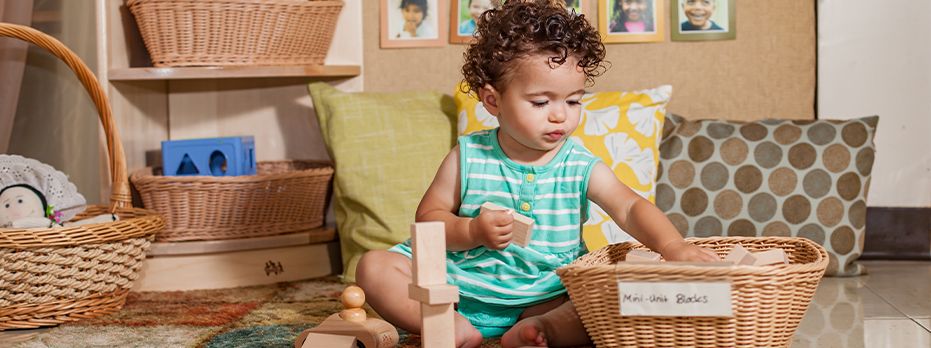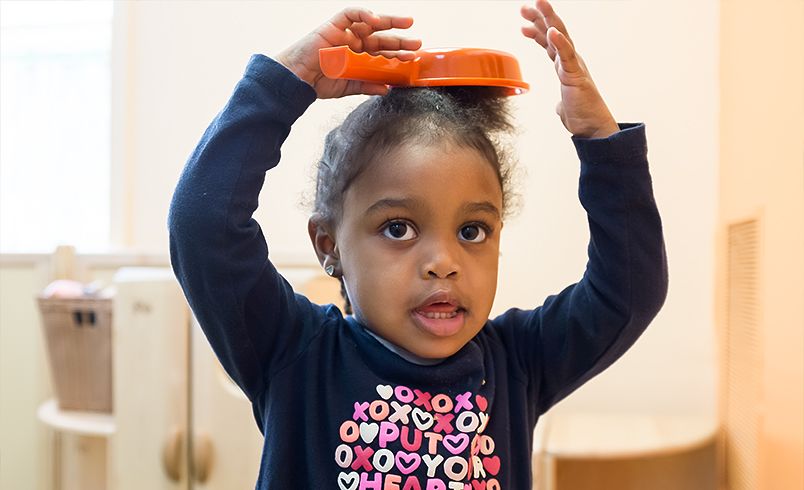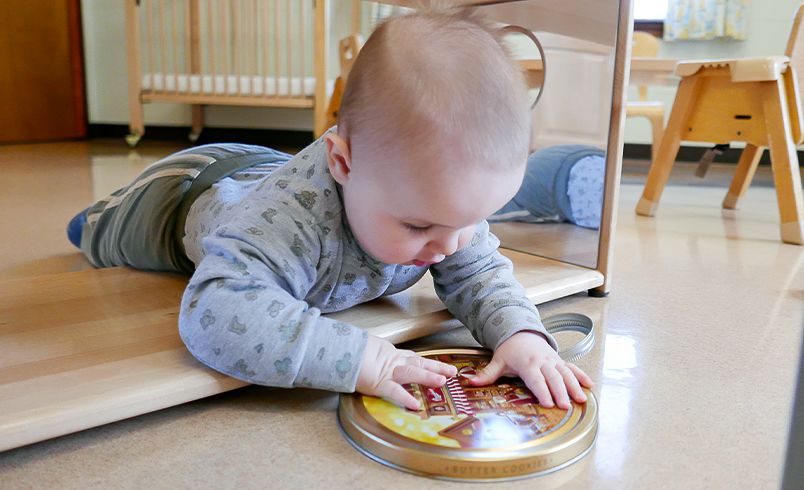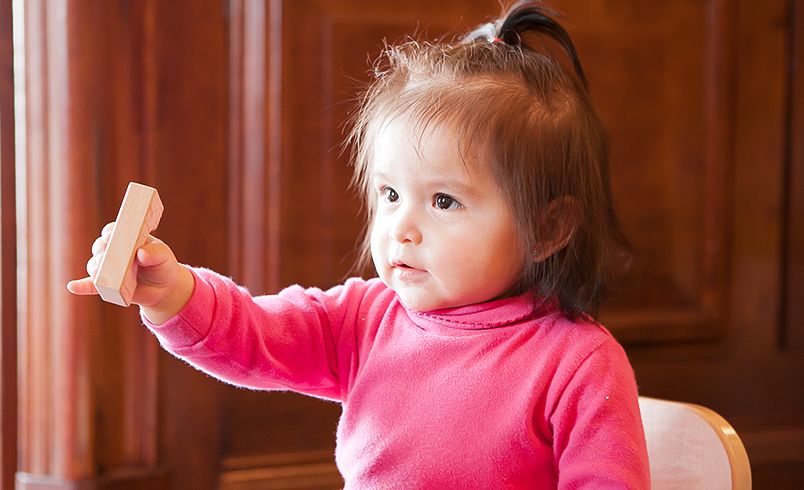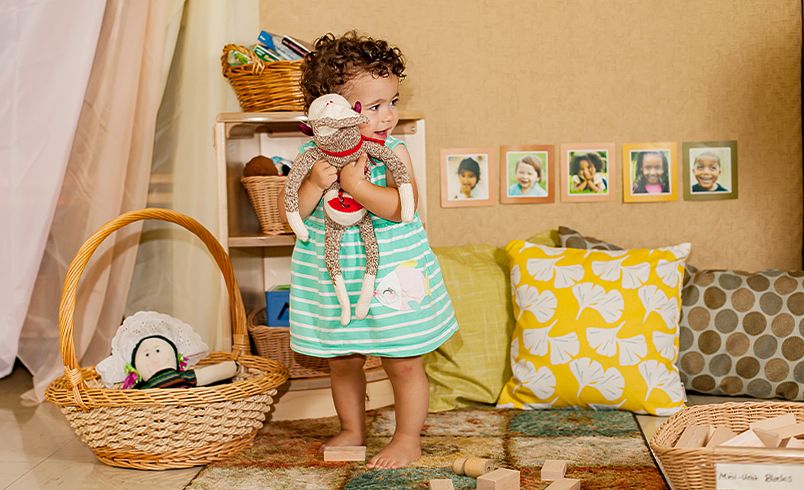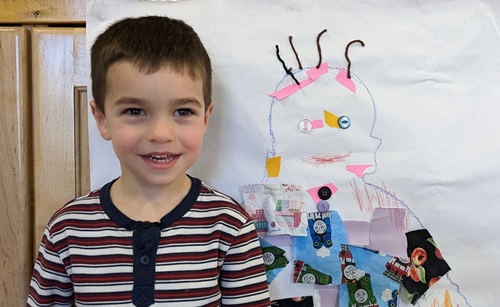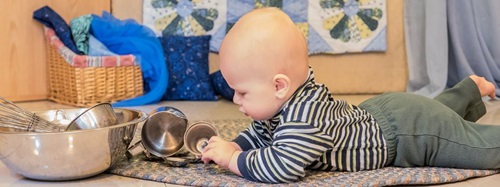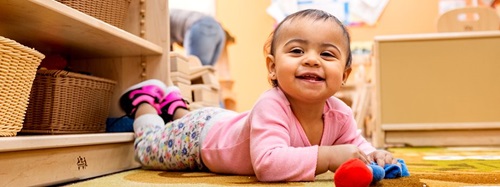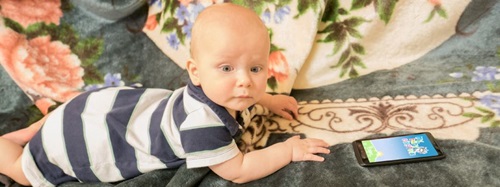Creating a Supportive Environment for Toddlers
Helping Young Children Thrive
| June 2020Toddlerhood, one of the most active periods of life, can be very demanding, especially on the caregiver. However, caregivers can strengthen their toddler’s autonomy and foster self-directed play and learning by creating a supportive environment and providing appropriate playthings for the child. This strategy works whether you are caring for toddlers in a group-care environment or at home with parents.
The Pikler Institute, which began as an orphanage in Budapest, and is now an international teaching institute for early childhood educators, has a lot to offer in the care of our youngest children. This article will focus on just two major contributions from the Pikler approach: 1) differentiating between child exploration times and caring times and 2) setting up a safe environment with playthings that interest toddlers.
Differentiating Between Caring Times and Exploration Times
Caring times are the times you directly care for the child. Caregivers should use these times to intentionally interact with the child in their care. Caring times happen naturally during the course of the day, for example: diapering, feeding, bathing, and dressing.
Most of us have gotten used to multitasking. But in order to maximize on the intentional interaction with children during caring times we need to eliminate other distractions and focus on the child. It is key to be purposefully present with your child during the caring time. Turn off electronics—no cell phone. Look at your child and have eye contact, interact, and engage in conversation. Truly “be with your child” during caring times. They deserve your complete focus.
Exploration time is when the child explores independently, with little or no interference from an adult. This is the child’s time to do the child’s “work” (explore and learn). For this to succeed, it is essential for the child’s environment to be safe and stocked with playthings that are worthy of your child’s investigation.
Making the Most of Child Exploration Time
For both you and your child to get the most benefit from child exploration time, you need to focus on two key aspects:
- Setting up a defined play area that is extremely safe.
- Stocking the play areas with toys and other play objects that will keep your child engaged.
These two concepts work together. The safer the area is, the more freely the toddler may explore the play area and all that it contains, without intervention from a caregiver.
Setting up a Safe Play Area
While setting up a safe area, the first thing you need to do is to make sure you will have good visibility. Secondly, you will want to make sure the area contains no objects that could be harmful to your child—no choking hazards, nothing poisonous if swallowed, etc. Not only should the toys and other play objects be safe, but you may find it necessary to adapt the furniture, cabinets, etc. Stores have many devices to “Toddler-proof” an area, and you have probably already employed devices like this throughout your home. There are plastic covers for electrical outlets, magnetic locks for cabinet doors, and cushioned bumpers for furniture corners.
Once you have the area ready, check it by looking at it from your child’s level. This might involve getting on your hands and knees if you have a toddler. If you have an infant, lay on the ground and look around. From these perspectives, you will have a better chance of identifying dangers you might miss from an adult’s height.
The area should be inviting and intriguing to your child so she will want to explore and play there. The play area could be defined by a mat or blanket. Making the area sound like fun for your children depends on how you describe it to them. Tell them this is a special area for them, for example it can be their magic carpet.
Be aware that they may not stay confined to their “magic carpet” for a long stretches of time. They may play for 30 minutes or so before they need a break. You will know when they need to stretch. Then, maybe add some movement into the mix. For example, do a scavenger hunt around the house. March up the stairs and pretend it is a parade, or play follow the leader, or whatever sounds fun. End the movement by going back to their special area. For example, the last stop on the parade can bring them back to their magic carpet, or they can play follow the leader back to the blanket. It will be a win-win for you all.
Active vs. Passive Playthings
You’ve probably noticed how a young child can become absorbed for a long amount of time with just a simple box or container. On the other hand, a child will quickly lose interested in a sophisticated toy, such as a Jack-in-the-box or a toy that includes recorded messages. An “active” toy does something that entertains while the child watches passively. It may get a child’s attention for a while, but will quickly become boring. A “passive” toy requires the child to actively manipulate it.
Passive playthings encourage the child to investigate, learn, and be self-engaged. They draw out the child’s imagination and help them stay engrossed. This concentrated exploration or play, in turn, helps the child make intellectual connections. Children that are involved with passive toys and objects are busy because they have something interesting to do. Thus, they are NOT bothersome and do NOT need to be entertained.
Passive playthings include:
- Books – Your child can “read” to a doll, look at the pictures, pretend to be a daddy or mommy. Books can be looked at repeatedly. They may be relaxing for our child but can also be used as a jumping off point for imaginary play and storytelling.
- Toy cars – These can be “driven around” by your child around. They may race or be used with ramps of blocks (older toddlers), or used to give a doll or stuffed animal a ride. Exploration happens as she tests how the speed varies on a flat surface (like one of the books), or on a ramp, or on the blanket. I suggest cars of various shapes and colors for both girls and boys.
- Blocks (or boxes)– Your child can use her imagination to build towers, houses, a road for the toy car, and many other things. They can be sorted, or child can use a block in imaginary play with a stuffed animal, as a table or chair, for instance.
- Dolls – These can be snuggled, cared for, spoken with (even if your child is pre-verbal), can interact with another doll, or can be a non-judgmental audience for the child.
- Plastic Bowls>– These can be used to sort things, be part of pretend eating, be a hat, be used to feed a doll, be stacked, or even balanced on the head.
- Stuffed animals– Children love to hold and hug these (calming the child) and they can also interact with other objects. Also, imaginary play with stuffed animals invites young children to explore and try different roles.
The great thing about passive toys and objects, such as the above, is that children will stay engaged with them for an extended length of time.
Conclusion
Toddlers naturally require a lot of attention and care. Responding to their needs is critical in fostering healthy development and learning. However, this does not mean that you need to be constantly entertaining them. Equally important to caring times, are times when a child can freely and independently play and explore. In order for this to be productive, you as the caregiver need to carefully plan the environment. Once this is established, you will no longer be the entertainer of a noisy child, but an observer of a satisfied child who is fully engaged and independent during playtime.

